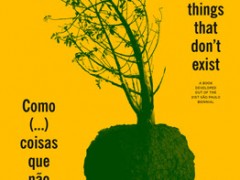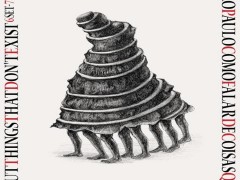How to (learn from) things that don’t exist
2.10/2015 – 17.01/2016
An exhibition developed out of the 31st São Paulo Biennial curated by Charles Esche, Galit Eilat and Oren Sagiv, assisted by Serralves curators Ricardo Nicolau and Paula Fernandes, and organized by the Fundação Bienal de São Paulo in collaboration with the Serralves Museum of Contemporary Art, Porto. The 31st Sao Paulo Biennial was additionally curated by Nuria Enguita Mayo and Pablo Lafuente with Benjamin Serrousi and Luiza Proença.
The Artists are Juan Pérez Agirregoikoa, Yael Bartana, Anna Boghiguian, Johanna Calle, Tony Chakar, Chto Delat, Contrafilé & Sandi Hilal & Alessandro Petti, Danica Dakić, Etcétera & León Ferrari, Nilbar Güreş, Clara Ianni & Débora Maria da Silva, Voluspa Jarpa, Edward Krasiński, Graziela Kunsch & Lilian L’Abbate Kelian, Mark Lewis, Ana Lira, Gabriel Mascaro, Virginia de Medeiros, Cildo Meireles, Éder Oliveira, Bruno Pacheco, Agnieszka Piksa, Armando Queiroz & Almires Martins & Marcelo Rodrigues, Walid Raad, Juan Carlos Romero, Wilhelm Sasnal, Qiu Zhijie
The São Paulo Biennial was initiated in 1951 and is the second oldest art biennial in the world. This will be the first time in its more than 60-year history that the São Paulo Biennial will travel outside Latin America.
The exhibition at the Serralves Museum of Contemporary Art features 28 artists and artist collectives from the 31st São Paulo Biennial. It is a project that draws on the experience of the Biennial in Brazil to tell a different story in Europe.
How to (learn from) things that don’t exist is an investigation into art’s revelatory potential. The title of the exhibition is itself in constant change with the mutating verb suggesting some of the many, different ways to experience art as a process of becoming. The artworks in the exhibition offer a perspective of how religion, history and other systems of control affect daily life and shape ways of thinking and imagining the world.
Works of Brazilian artists are strongly represented to reveal ways in which the current generation of artists has emerged from the shadow of Tropicalismo and Brazilian modernism. Artists from Argentina, Bosnia-Herzegovina, Canada, Chile, China, Colombia, Egypt, Israel, Italy, Lebanon, Palestine, Poland, Portugal, Russia, Spain and Turkey are also represented, many with works made especially for the Biennial.
This post is also available in: Spanish

 Home
Home

